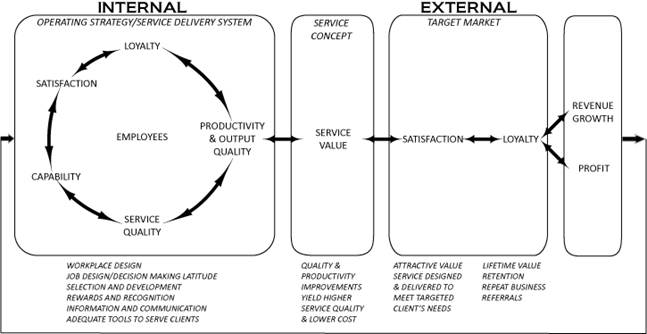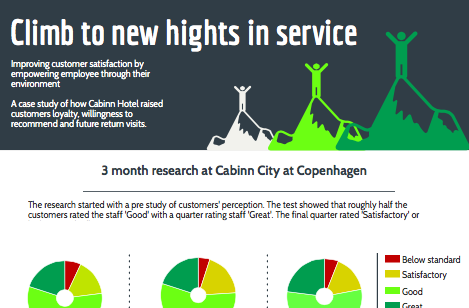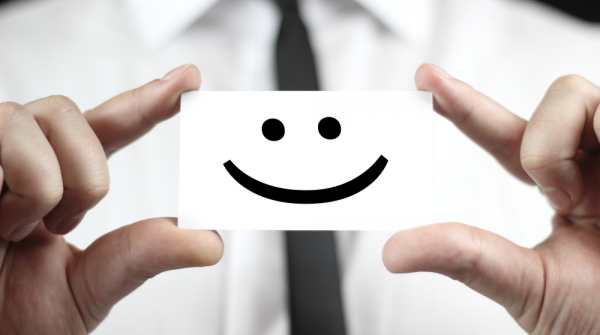Enjoy higher customer loyalty and recommendation
Tabsurvey has over a three month period collaborated with Hotel Manager, Mattias Thorsteinsson at Cabinn City Hotel by providing software and help for his research. In order to enhance the quality of the customer experience the research objective was clear: The objective was to research the correlation between improving the workplace satisfaction and value of services provided (customer loyalty and satisfaction).
The backbone of the hypothesis was grounded in the Service-profit chain framework developed by researchers at Harvard university (Heskett, Jones, Loveman, Sasser & Schlesinger).
Service-profit Chain
The framework explains that customer loyalty stimulates profit and growth through repeated purchase. Satisfaction stimulates loyalty, which in turn is influenced by the value of services provided by the employees. In order to deliver high value service to customers, improving the workplace satisfaction is required. High level of employee loyalty and satisfaction is dominantly through high-quality support and policies that work to lessen the “pain” in the work environment. Which fortunately helps your employees deliver better results. A leadership style that promotes individual employee importance and value is very important here.

The service-profit chain shows a work flow from employees towards customers resulting in profit.
Increase employee loyalty by empowering staff in workplace so they can do a great job → better service to customers → higher customer satisfaction → which turns into customer loyalty, repeat purchase and recommendations → turns a higher profit. |
The question that Cabinn tested was whether “customers receive a better impression of staff by working with a Service-profit chain orientation” and “how this effected customer loyalty through their recommendation rate, return stay at the hotels and meeting expectations”
The research/methodology
We decided to do the research in two separate periods to see the initial and post customer and employee experience. Customers answered 9 questions ranging from staff efficiency, friendliness and reservation satisfaction to the purpose of visit, did the stay live up to expectations and willingness to recommend hotel to others. Employees answered an internal workplace assessment with 37 questions in two main areas; physical and psychological. The focus of the internal survey was to focus improvement to the factors that caused most pain for the employees. All employees received the workplace assessment survey twice. First was in the beginning of the test and the final was near the end of the test. The first was to analyse areas of improvement while the second was to analyse the impact of the change.
After working towards improving the workplace conditions, the customer survey system started again to capture the results of the initiatives. The results were in, and what an improvement!

Results
The first research question of how customers perceive staff (friendliness, efficiency and courtesy) vastly improved with more than the double amount of ‘great’ ratings than before. Simultaneously, ‘below satisfaction’ and ‘satisfactory’ were halved – this was reached within a 3-month-period. As a result customers now see Cabinn’s staff as much more service-minded. In other words: Staff are there for the customers.
When we examine how the changes affected recommendation ratings, return stay and meeting expectations, we also see an increase. The increase in customer ratings for these was less. However the ratings were to begin with already quite high. Nevertheless, Cabinn increased the number of customers who promote the Cabinn hotel to friends and family by 6 %. Imagine what this number means for referrals in a one-year period. Customers who responded that they would return to Cabinn in the future also increased by roughly 8 percent.
How much would an increase in returning customers by 8 % mean for your revenue?
(This is an additional 8 people out of 100.)
Interesting is it also, that customers who felt the hotel lived up to expectations increased by 8 % – only by empowering employees. Hence, there are clear expectations from hotel customers that go beyond material goods (price, cleanliness, food, view etc.) which are more confound to the softer values of human interaction – the level of service-mind amongst staff.
See the Info-graph for more details on results.

How did Cabinn succeed in improving the workplace satisfaction within 3 months?
Cabinn City found 4 focus areas for improvement. They selected: temperature during winter as well as summer (physical), workplace noise-level (physical) and safety at work (psychological). During a one-month period, Cabinn worked actively to decrease the pain of these by installing new climate system. They also invited police consultants to give speeches on workplace safety and addressed noise at the workplace at meetings with employees. In the spirit of the leadership style in Service-profit chain theory, the manager involved each and every employee in solving issues related to improving the workplace. As a result, positive ratings on these parameters increased from the initiatives. Most noticeably is the indoor climate and the safety at work factors.
 k
k
Impact on management
In the final interview with Cabinn, Hotel Manager Mattias explained how the new leadership style affected his role and work. “My role has moved from a very defined leadership role of assigning tasks and managing the hotel to a more coordinative one. I am engaging my employees much more in the solution process and focus a lot of my time on sensing out the feelings of my employees. It is a much more coordinating and democratic way of management. To begin with, this was very time-consuming, but we are getting better.
Want to learn more?
If you are curious about improving the workplace satisfaction and employee engagement in general, you can read more here.
Stay tuned!
